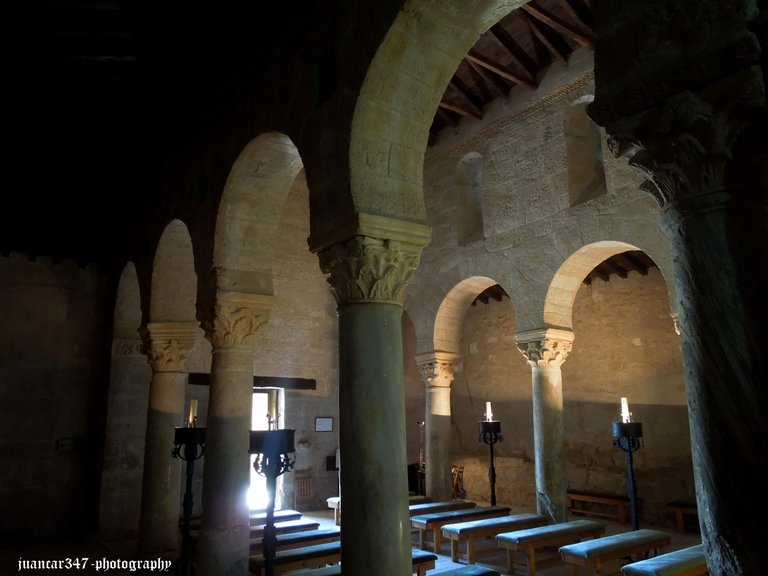
Palencia is a harsh land, especially in that part that forms the natural border with old Castile and is known as Gothic Fields, but it is also a providential land, in terms of historical richness and architectural heritage.
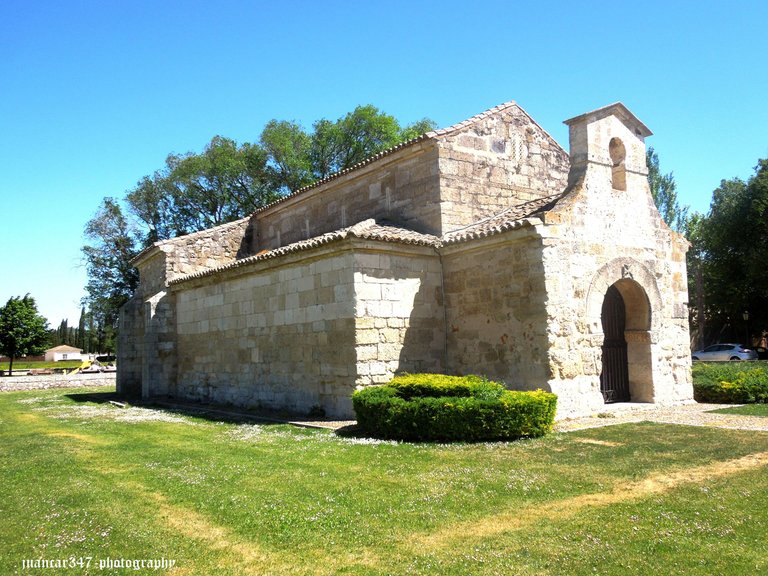
An architectural heritage that stands out for having, better or worse preserved, a very important part of that art of Christianity, as the Romanesque was considered for centuries, but which also preserves some notable examples of what could well be considered as invaluable fragments of the lost world of the Visigoths.
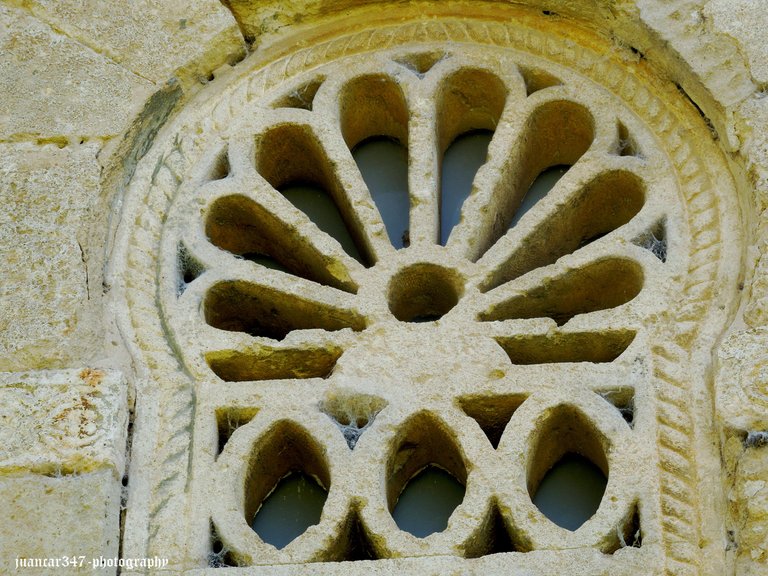
Apart from the significant Crypt of San Antolín -on which the imposing cathedral of Palencia was later erected, which the people of Palencia affectionately call 'the beautiful stranger'- the most outstanding surviving example of Visigothic art, we have it a few kilometers from Palencia capital, in a town whose name is Baños de Cerrato, currently attached to Venta de Baños.
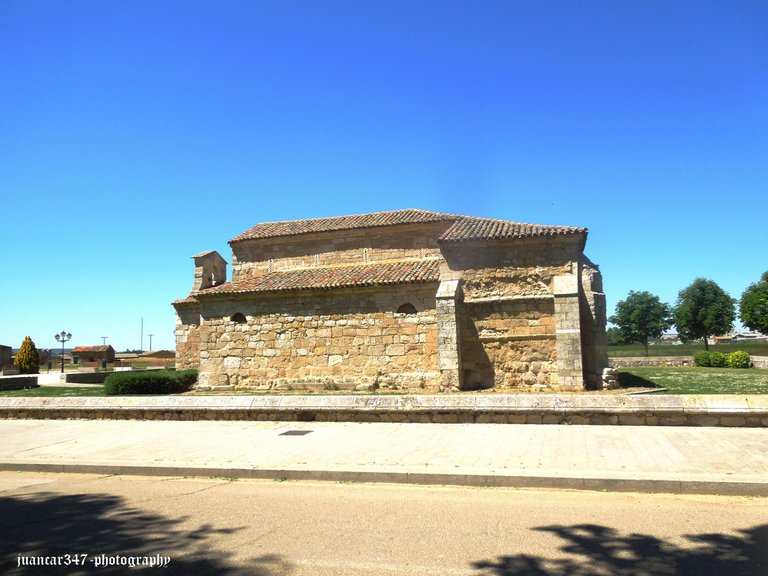
Away from the typical basilica plan in the form of a Greek cross -appreciable in other constructions of its time, such as the basilica church of Santa María de Melque, located in the Montes de Toledo, that of Santa Comba, located a few kilometers from the border with Portugal, in the municipality of Bande in Ourense or even with the Zamoran and pilgrim basilica of San Pedro de la Nave- the trapezoidal perimeter of its nave -a plausible consequence of having been erected on top of an ancient building of Roman origin, probably a temple- seems notice the advent of a monastery style that served as an example, in later times, to the opening of other architectural conceptions, such as the pre-Romanesque and Romanesque, the latter, displaced, approximately, at the end of the twelfth century, when it began to burst with force the new and revolutionary gothic style.
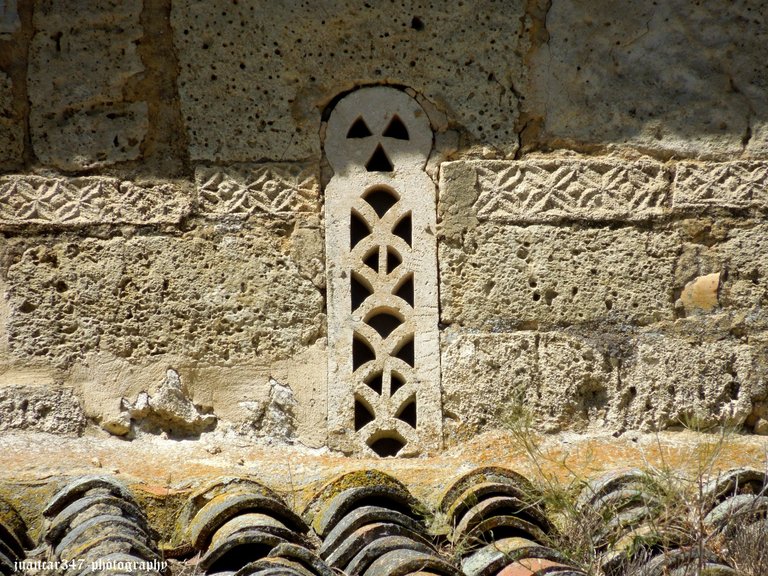
Its more than probable Romanesque antecedents include the reuse of certain materials, such as the bases, columns and capitals, which separate the nave into three sections, the highest being the central one, which is accessed through a door, with its characteristic horseshoe shape, above whose lintel there is a sculpted cross.
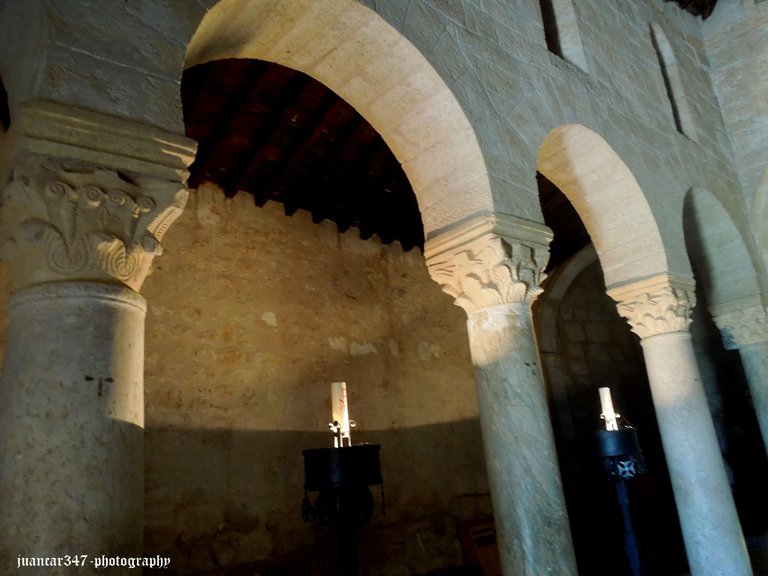
Leaving aside the modern electrical installation, due to its characteristics and the lack of adequate windows, the shadows and darkness inherent in this type of temple, recreate environments that border on the unimaginable or unknowable and that surely increased the respect, if not the fear, of some faithful, whose existence was torn between the vicissitudes of the life of the servant and that of the improvised warrior, since disputes were waged, not only among the Visigothic noble people themselves, quite fond, it seems, of conspiracies, but also against neighboring towns.
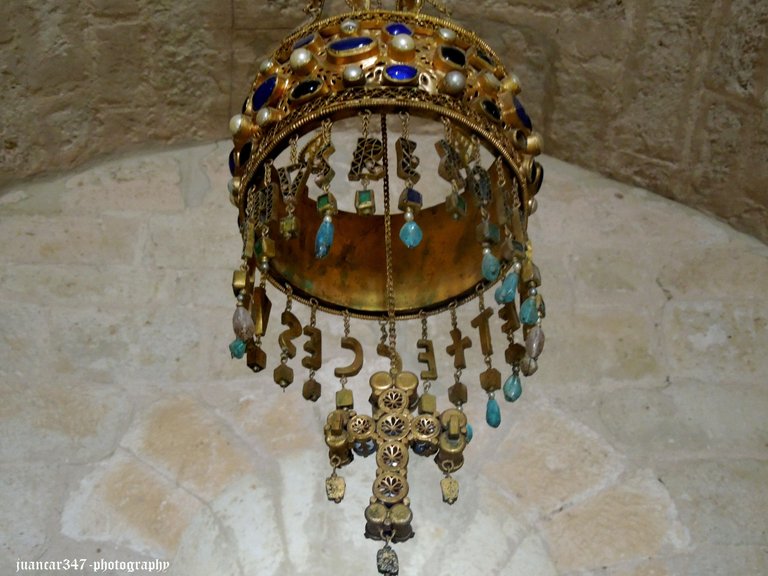
In such a way that it was in the year 661, approximately, when the then Visigoth king Recesvinto ordered its construction, after an arduous campaign against towns of Aquitanian and Basque origin, the latter town, which a few years later would end, in the mountains of Roncesvalles, with the cream of the Carolingian army of Charlemagne, although in the Pseudo Turpin and even in the Codex Calixtinus of Aymeric, insist that they were ambushed by the Muslims, giving rise to a flowery legend that every pilgrim knows.
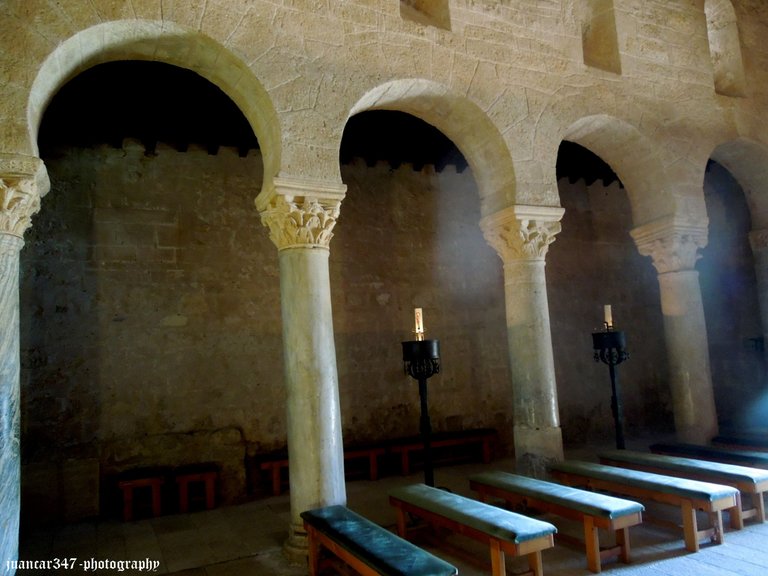
Numerous legends have been preserved around this temple and the figure of the Visigoth king Recesvinto: when some reform works were carried out, a curious ceramic slab was found, which had an imprinted hand and which the town soon took it upon itself to identify with the hand of the king himself, affirming that any visitor who put his own hand on it would attract good luck forever.
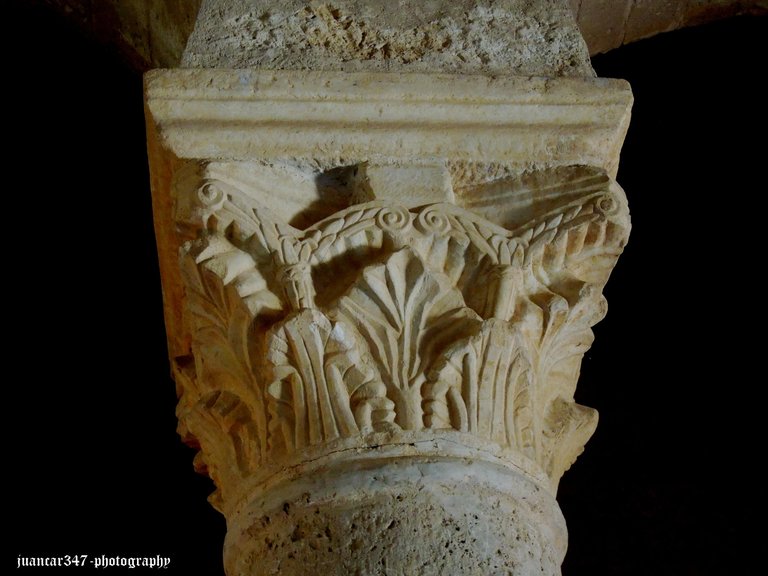
Another of the legends tells that the king had a kidney condition, which he cured immediately after drinking the water from a nearby spring -it is assumed that the aquiferous wealth of the place was already exploited by the Romans, who installed thermal springs there - which currently bears his name: fountain of King Recesvinto and from which the Municipality of Baños de Cerrato recommends not drinking, as the corresponding signs warn, for not considering said water to be drinkable.
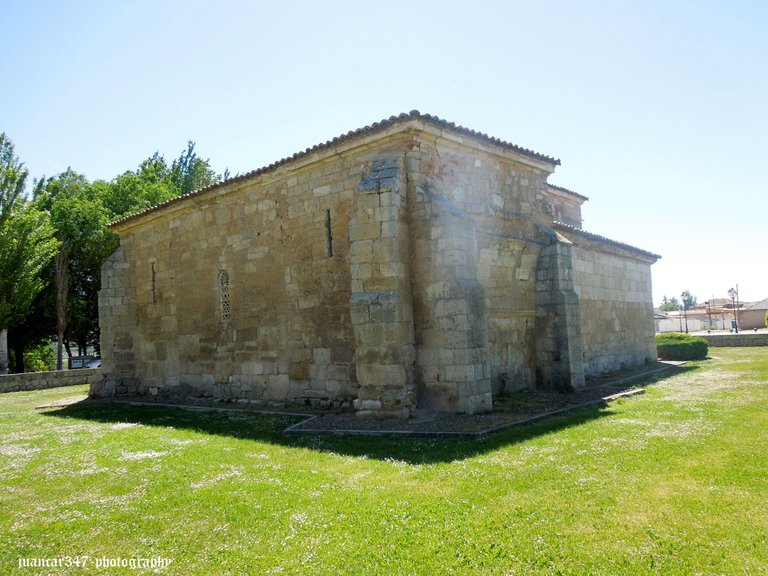
In short: one more testimony to the fragmented history of a people, the Visigoths, whose disappearance marked a milestone in the Iberian Peninsula and also left, more than a true architectural legacy, a whole legacy of memories and legends, which have remained in popular imagination until relatively recent times.
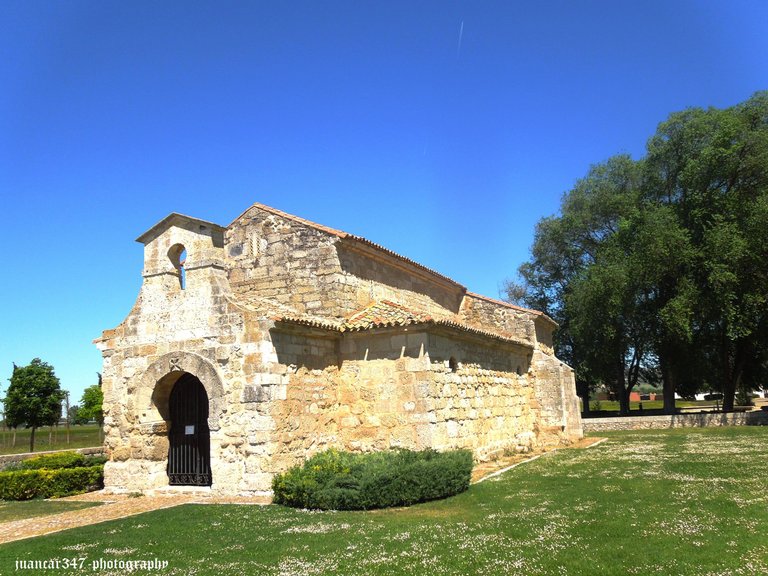
NOTICE: Both the text and the accompanying photographs are my exclusive intellectual property and therefore are subject to my Copyright.
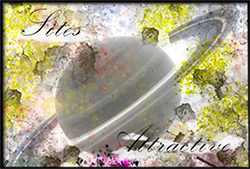



This is a nice architectural view.
I love the shot ✌️
The monuments are well detailed.
Thank you very much for your comment and best regards
You are most welcome @juancar347
Congratulations @juancar347! You have completed the following achievement on the Hive blockchain and have been rewarded with new badge(s):
You can view your badges on your board and compare yourself to others in the Ranking
If you no longer want to receive notifications, reply to this comment with the word
STOPCheck out the last post from @hivebuzz:
Thank-you very much
Daily Travel Digest #1519.
Become part of our travel community:
- Join our Discord
- Learn more about our travel application
Hiya, @ybanezkim26 here, just swinging by to let you know that this post made it into our Honorable Mentions in Your post has been manually curated by the @pinmapple team. If you like what we're doing, please drop by to check out all the rest of today's great posts and consider supporting other authors like yourself and us so we can keep the project going!Thank-you very much
Wow, this view of the structure is so amazing!
And in addition, they serve us to observe the evolution, both artistic and architectural, that was happening to them over time. Thank you very much for your comment and best regards.
You're welcome (^_^)
Hello @juancar347. It always thrills me whenever you feature rare architectural specimens. And discovering the Visigothic architecture of San Juan de Baños is definitely one such excellent example. Aside from the many legends embedded within its walls, like the healing water springs that king Recesvinto nourished himself with to miraculously cure his kidney problem, I'm also fascinated by this historic location's deep connection with the ancient Romans. What's even more incredible is that this heritage building gives us physical clues to the humble beginnings of architectural styles such as the Pre-Romanesque, Romanesque, and Gothic signatures. Thank you for showcasing this interesting masterpiece. Have fun and keep safe in your various explorations. Kind greetings! 😊
Said a great British writer, G.K. Chesterton, that the best biographies should always begin with Genesis. And I think he was very right and that it could also be applied to Architecture. If we want to understand how we got here, we must inescapably go back in time and try to see the many fascinating connections that have pushed us forward. These are examples, perhaps strange, but ultimately relevant and from which we can draw many interesting conclusions, including those inevitable legendary allusions. As always, thank you for your kind comment. An affectionate greeting.
Architecture Brew #61. More power!Congratulations @juancar347! We're delighted to specially curate your awesome publication and award it RUNNER-UP in
Thank you for subscribing to Architecture+Design, an OCD incubated community on the Hive blockchain.
Thank-you very much
Our utmost pleasure always dear @juancar347. Keep up the fantastic posts! 😀
Beautiful architecture, I have heard that behind a monument is hidden an incredible history and legend. It is interesting to investigate and know places with these because it allows us to know its history and this is interesting, especially the curious ceramic slab that says that anyone who placed his hand on it good luck would be with him forever, wow it sounds interesting. I really enjoyed learning a little about this legend. Thanks friend @juancar347 for sharing with us. Greetings.
I appreciate your comment and evaluation. I think that everything is part of a monumental complex that should not be disdained. Architecture, Art, History and Tradition, allow us to get a little closer to the way of thinking of an era that is practically forgotten, but that constitutes invaluable chapters to understand and value a way of life and an architecture that were precursors of other styles, where the design was changed, to put it simply, but basically, not the symbolic content. The legend of the hand (and I assure you that visitors put theirs every time they enter the church) is modern, but the same does not happen with the water from the fountain that cured Recesvinto's kidney disease, which is historical and It possibly has non-magical properties, as was supposed in the 7th century, but it does have therapeutic properties. a cordial greeting
So it is everything is formed into a single whole, and from each one we know interesting things that leads us to new discoveries and knowledge, which enrich us. Thank you friend for the information I liked to know a little about this great church. Greetings
Love the architecture especially those beautifully carved stone pillars.
Thanks for sharing.
Thank you for appreciating it. Greetings
The rewards earned on this comment will go directly to the person sharing the post on Twitter as long as they are registered with @poshtoken. Sign up at https://hiveposh.com.
Congratulations, your post has been added to Pinmapple! 🎉🥳🍍
Did you know you have your own profile map?
And every post has their own map too!
Want to have your post on the map too?
Thank-you very much
Congratulations, your post has been added to Pinmapple! 🎉🥳🍍
Did you know you have your own profile map?
And every post has their own map too!
Want to have your post on the map too?